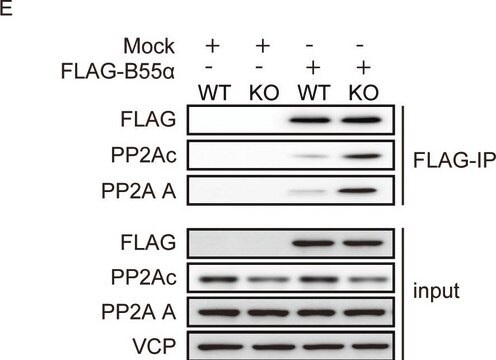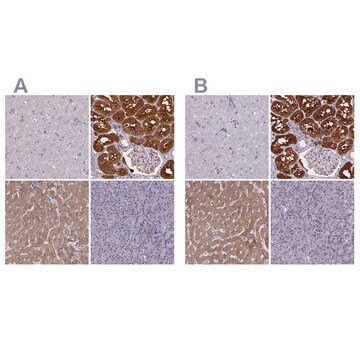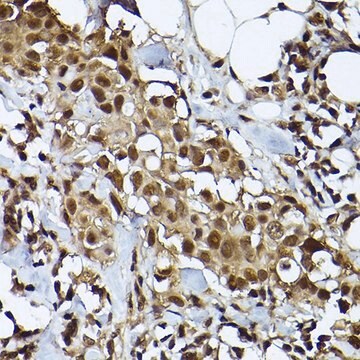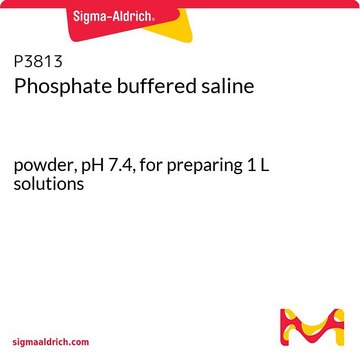R6878
Monoclonal Anti-phospho-Retinoblastoma (pSer795) antibody produced in mouse
~2 mg/mL, clone RB-10, purified immunoglobulin, buffered aqueous solution
Synonym(s):
Anti-phospho-Rb (pSer795)
About This Item
Recommended Products
biological source
mouse
conjugate
unconjugated
antibody form
purified immunoglobulin
antibody product type
primary antibodies
clone
RB-10, monoclonal
form
buffered aqueous solution
mol wt
antigen 110 kDa
species reactivity
mouse, rat, human, bovine, hamster
concentration
~2 mg/mL
technique(s)
immunohistochemistry: suitable using 3% paraformaldehyde fixation, 0.15% Triton X-100 permeabilization
indirect ELISA: suitable
microarray: suitable
western blot: 2-4 μg/mL using a whole cell extract of human melanoma cell line G-361
isotype
IgG1
UniProt accession no.
shipped in
dry ice
storage temp.
−20°C
target post-translational modification
phosphorylation (pSer795)
Gene Information
human ... RB1(5925)
mouse ... Rb1(19645)
rat ... Rb1(24708)
General description
Immunogen
Application
Immunofluorescence (1 paper)
- immunoblotting
- immunocytochemistry
- immunofluorescence
- fluorescence-activated cell sorting (FACS) assays
- enzyme linked immunosorbent assay (ELISA)
Biochem/physiol Actions
Physical form
Disclaimer
Not finding the right product?
Try our Product Selector Tool.
Storage Class Code
10 - Combustible liquids
Certificates of Analysis (COA)
Search for Certificates of Analysis (COA) by entering the products Lot/Batch Number. Lot and Batch Numbers can be found on a product’s label following the words ‘Lot’ or ‘Batch’.
Already Own This Product?
Find documentation for the products that you have recently purchased in the Document Library.
Our team of scientists has experience in all areas of research including Life Science, Material Science, Chemical Synthesis, Chromatography, Analytical and many others.
Contact Technical Service








